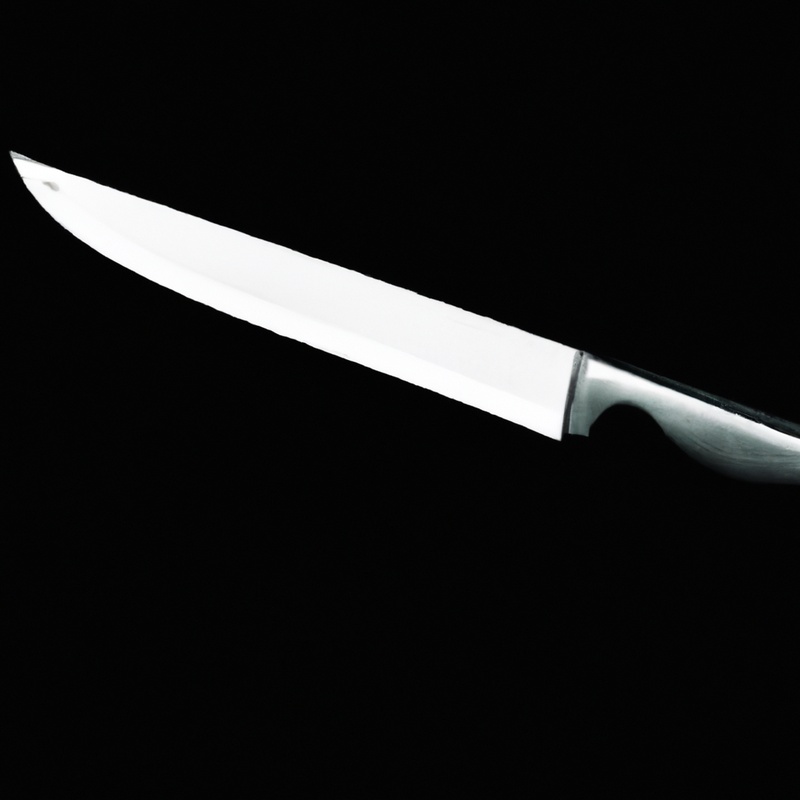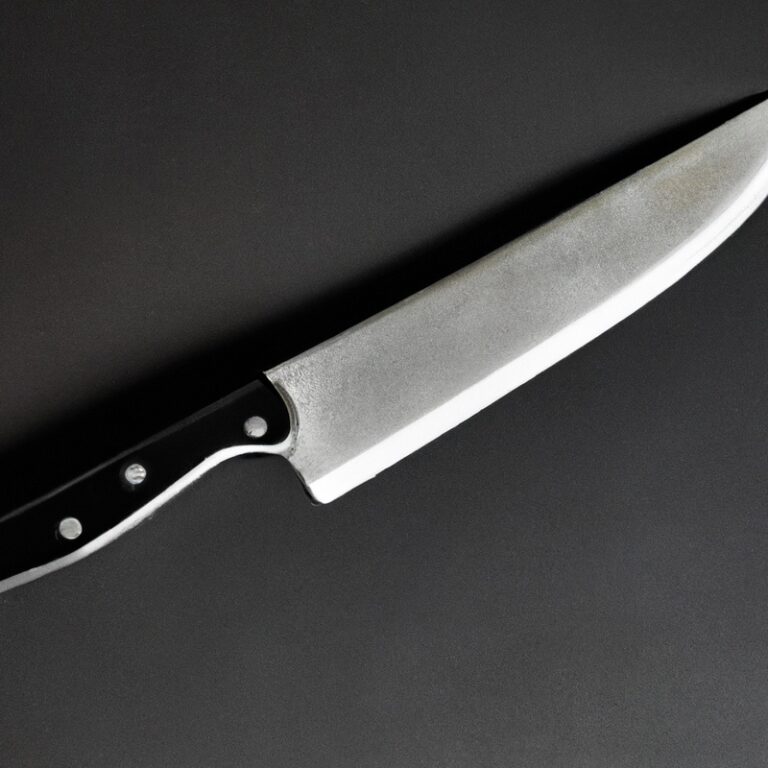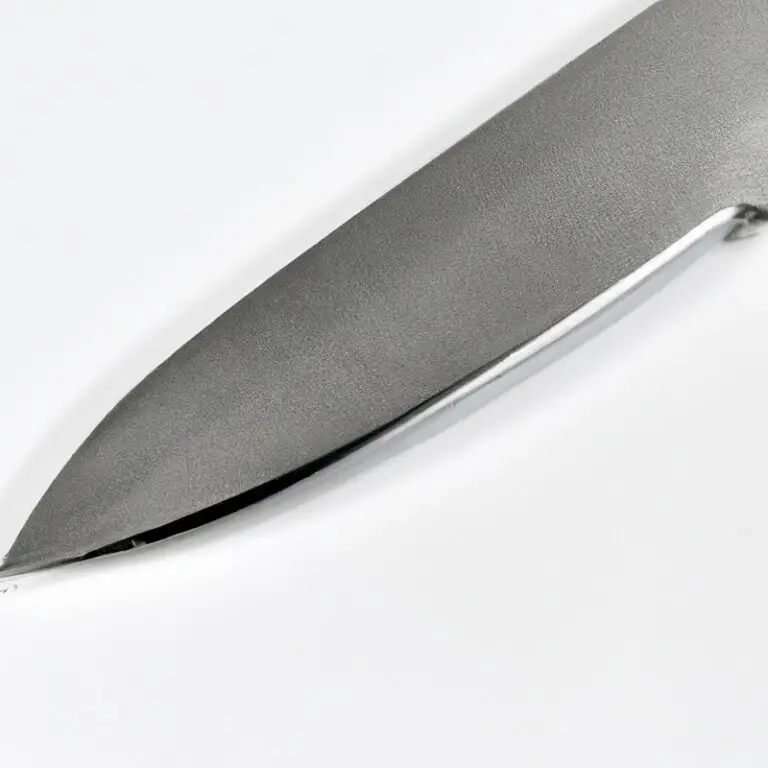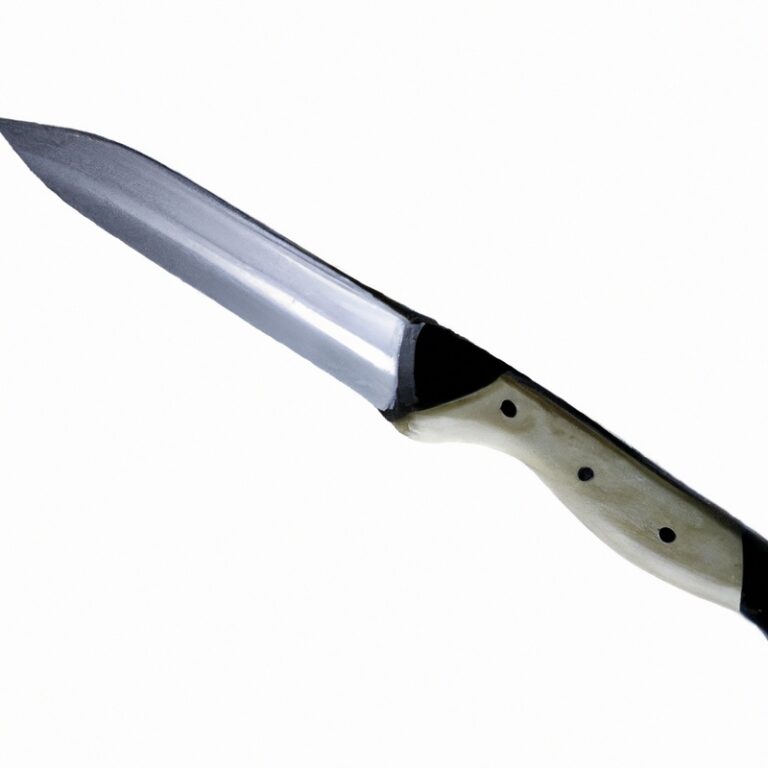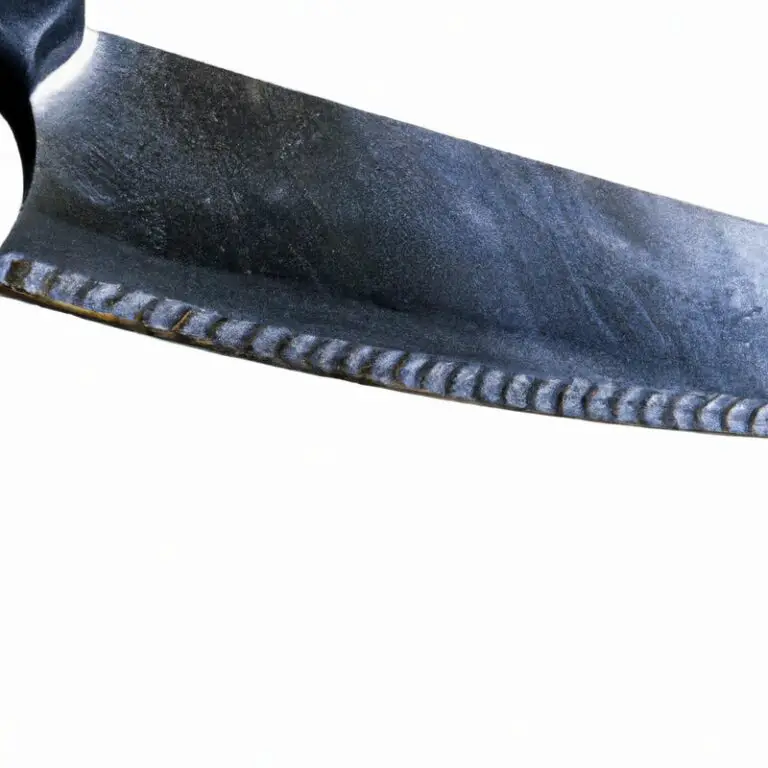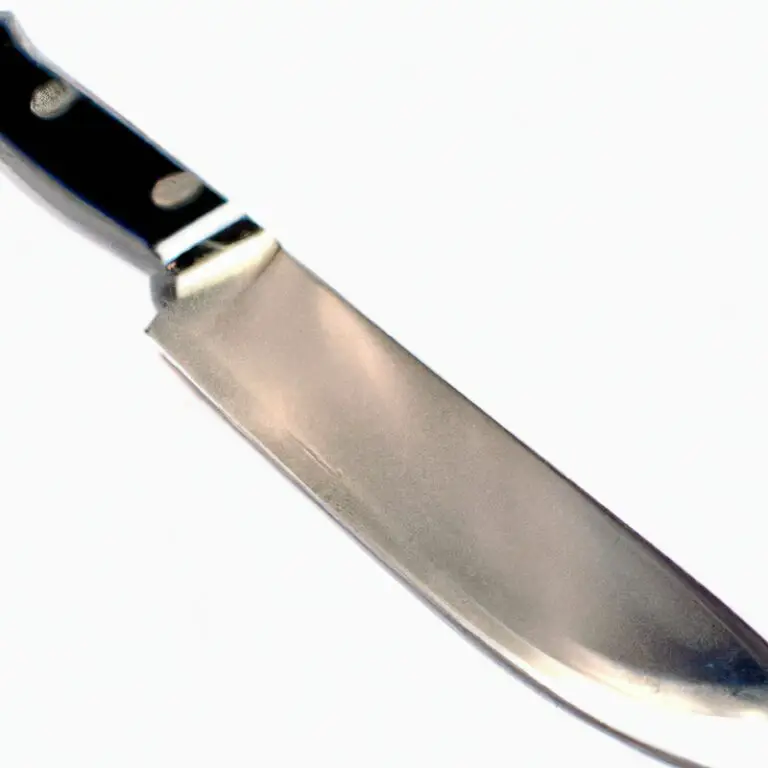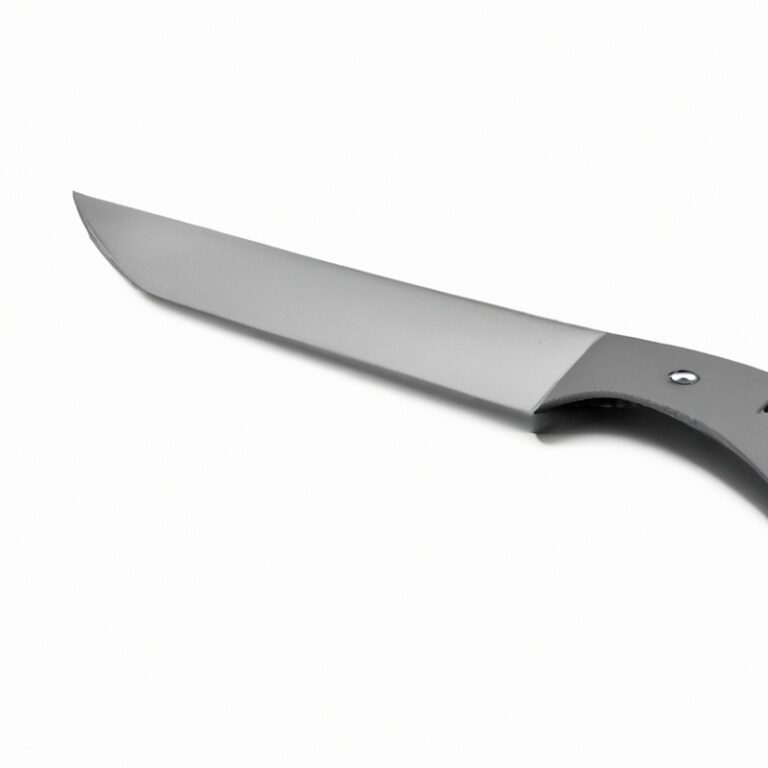What Are The Key Features To Look For When Selecting a Serrated Knife For Professional Culinary Use?
Key Takeaways:
- Serrated knives with a high-quality stainless steel blade provide optimal cutting performance and durability.
- The length and size of the blade should be chosen based on the specific culinary tasks they will be used for.
- Comfortable handle ergonomics and a secure grip are essential for prolonged professional use.
- A serrated knife with a well-designed, balanced weight distribution offers better control and precision during cutting.
Hey there! Are you a culinary professional on the hunt for the perfect serrated knife? Well, look no further because I’ve got you covered.
In this article, I’ll be sharing some key features to consider when selecting a serrated knife specifically designed for professional culinary use.
We’ll dive into important factors like blade material and design, handle design, durability and maintenance, performance and versatility, price range, and additional considerations. So, whether you’re slicing through crusty bread or delicate tomatoes, you’ll have the right tool for the job.
Let’s get started!
| Key Features | Description |
|---|---|
| Blade Length | The length of the serrated blade, typically ranging from 6 to 12 inches, affects the knife’s versatility and the types of tasks it can handle. |
| Blade Material | The material used for the blade, such as stainless steel or high carbon steel, affects the sharpness, durability, and resistance to corrosion. |
| Serration Type | The type of serration, such as scalloped or pointed, determines the knife’s effectiveness in cutting through different textures, like bread or soft fruits. |
| Handle Material | The material of the handle, such as plastic, wood, or rubber, affects the knife’s grip, comfort, and stability during prolonged use. |
| Balance | A well-balanced knife ensures comfortable handling and reduces fatigue during extended cutting tasks. |
| Weight | The weight of the knife can impact control and precision, with personal preference dictating the ideal weight for the user. |
| Tang | A full tang, where the blade extends into the handle, provides added strength and stability compared to partial or rat-tail tangs. |
| Price | The cost of the knife relative to its features, durability, and quality is an important consideration for professionals. |
| Brand and Warranty | Reputable brands with good warranties offer assurance of quality and reliability, along with potential long-term support. |
Blade Material
Considerations for carbon steel blades
Considerations for carbon steel blades:
- Rust Resistance: Carbon steel blades are prone to rust, so look for blades with a protective coating or consider regular maintenance to prevent rusting.
- Sharpening: Carbon steel blades can be sharpened to a razor-like edge, but they may require more frequent sharpening compared to other materials.
- Staining: Carbon steel blades can develop a patina over time, which is a natural discoloration. Some chefs appreciate the distinction, while others prefer a pristine look.
- Reactivity: Carbon steel can react with acidic foods, affecting taste. Consider using a stainless steel knife for these ingredients.
Keep these factors in mind when selecting a carbon steel blade, ensuring it meets your specific culinary needs and preferences.
Blade Design
Benefits of scalloped or hollow edge
A serrated knife with a scalloped or hollow edge offers several benefits for professional culinary use.
- Reduced Friction: The scallops or hollows on the blade create air pockets, allowing the knife to glide easily through foods without sticking. This reduces friction and enables cleaner, smoother cuts.
- Easy Slicing: The serrations grip the food’s surface, making it easier to slice through tough crusts or skins, such as bread or tomatoes. It ensures clean, even slices without crushing or tearing the delicate interior.
- Versatile Cutting: The scalloped or hollow edge allows for versatile cutting techniques, such as sawing, rocking, or push cuts. This flexibility makes it suitable for various ingredients like meats, fruits, vegetables, and baked goods.
- Long-lasting Sharpness: With the serrated edge doing most of the cutting, a scalloped or hollow edge knife retains its sharpness for longer. This reduces the need for frequent sharpening and extends the knife’s lifespan.
Keep these benefits in mind when selecting a serrated knife for your professional culinary needs.
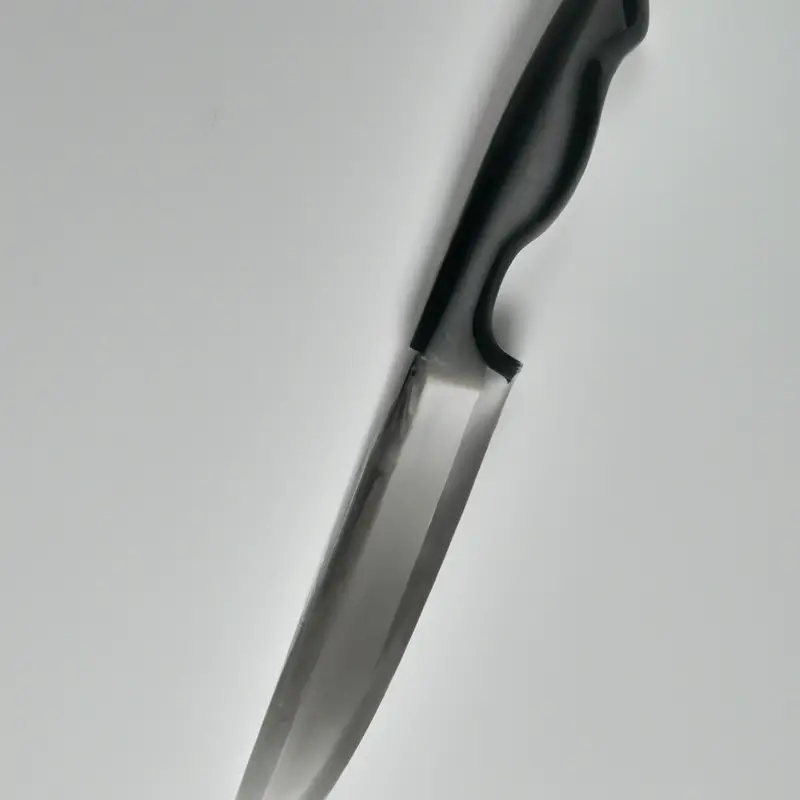
Considerations for wavy edge or pointed teeth
When selecting a serrated knife for professional culinary use, the design of the blade is an important consideration. If you’re considering a wavy edge or pointed teeth, there are a few key factors to keep in mind:
- Cutting Efficiency: A wavy edge or pointed teeth can be great for cutting through tough, crusty surfaces. They grip the food, allowing for smoother and more controlled slicing.
- Precision: The design of the blade helps maintain a more precise cut, especially when dealing with delicate foods like tomatoes or bread. The teeth or scallops help prevent squishing or crushing the ingredients.
- Maintenance: It’s worth noting that blades with wavy edges or pointed teeth can be a bit trickier to sharpen than straight edges. Consider the ease of sharpening and maintenance before making a decision.
To sum it up, when selecting a serrated knife with a wavy edge or pointed teeth, consider the cutting efficiency, precision, and maintenance requirements of the blade. Keep these factors in mind to ensure you choose the best tool for your professional culinary needs.
Importance of blade length and width
The blade length and width of a serrated knife play a significant role in its performance in the culinary field. A longer blade allows for easier slicing of larger items like bread or cakes, while a shorter blade provides more control for precision tasks like slicing tomatoes.
The width of the blade determines the amount of surface area that comes into contact with the food, affecting the ease of cutting.
It’s important to consider the specific tasks you’ll be using the knife for and choose a blade length and width that is suitable for those purposes. find a balance that suits your needs and preferences.
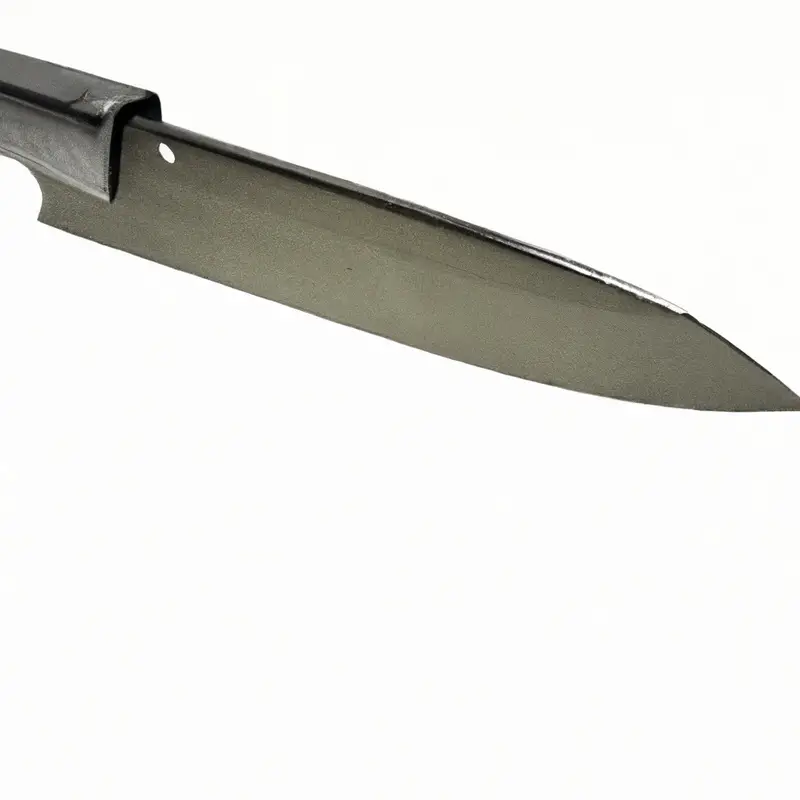
Handle Design
Comfort and ergonomics
Comfort and ergonomics are crucial when selecting a serrated knife for professional culinary use. A knife that feels comfortable in your hand and has an ergonomic design can reduce fatigue and improve your cutting efficiency.
Look for a knife with a well-balanced handle that fits comfortably in your hand, preventing slippage during use.
Additionally, consider a knife with a textured or contoured handle that provides a secure grip, even when your hands are wet or greasy. Comfort and ergonomics play a significant role in enhancing your overall culinary experience.
Materials that provide good grip
When selecting a serrated knife for professional culinary use, it is important to consider materials that provide good grip. A knife handle should be made of a material that is comfortable to hold and offers a secure grip, even when wet.
Look for handles made of materials such as rubber or textured stainless steel, as they provide excellent traction.
These materials will help prevent slips and ensure that you have full control over the knife while cutting. In addition, a handle with an ergonomic design will also enhance grip and reduce fatigue during prolonged use.
Durability and Maintenance
Blade hardness and wear resistance
When it comes to selecting a serrated knife for professional culinary use, blade hardness and wear resistance are crucial factors to consider. A hard blade ensures durability and longevity, while wear resistance minimizes the need for frequent sharpening.
Look for knives made from high-quality stainless steel or carbon steel, as they offer excellent hardness and resistance to wear.
These blades are less prone to chips, dents, and corrosion, making them ideal for heavy-duty use in the kitchen. Proper maintenance and care, such as regular cleaning and storage, will further prolong the life of your serrated knife.
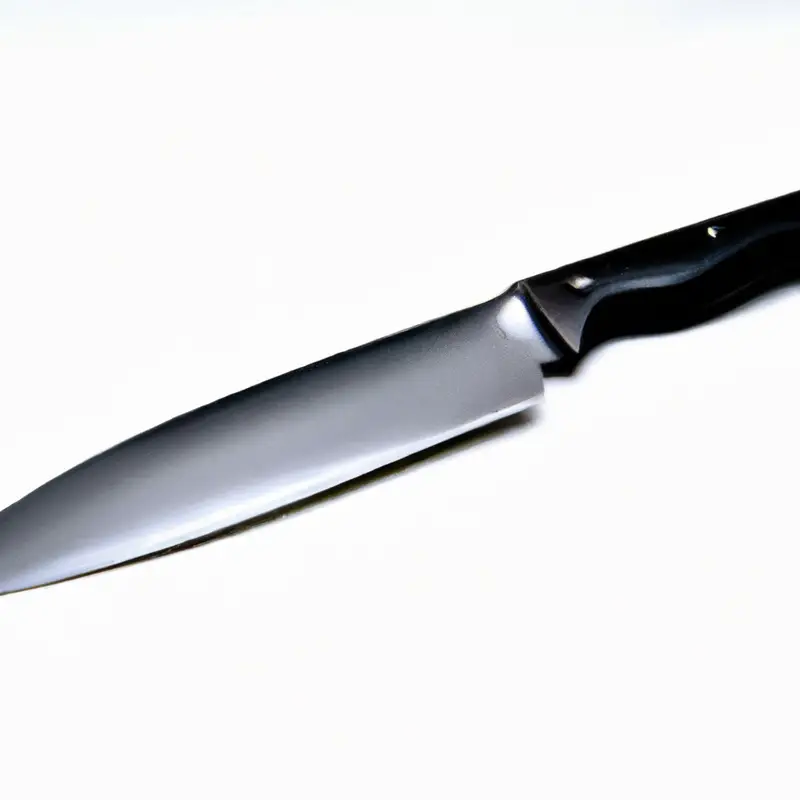
Proper cleaning and storage techniques
Proper cleaning and storage techniques are essential for maintaining the longevity and performance of your serrated knife. After each use, I recommend washing the knife with warm soapy water and a soft sponge.
Avoid using abrasive cleaners or scrubbing pads, as they can damage the blade.
Make sure to dry the knife thoroughly to prevent any moisture from causing rust or corrosion. I usually use a clean towel or cloth to wipe it down.
When storing your serrated knife, it’s best to use a knife block or a knife sheath to protect the blade and prevent accidental cuts.
Avoid storing it loose in a drawer or with other kitchen utensils, as it can lead to dulling or chipping. Remember to regularly inspect your knife for any signs of damage or wear.
If you notice any issues, it’s best to have it professionally sharpened or replaced.
Performance and Versatility
Cutting efficiency and precision
When selecting a serrated knife for professional culinary use, cutting efficiency and precision are essential factors to consider. Look for a knife that can effortlessly slice through various food textures, such as crusty bread or delicate tomatoes, with minimal effort.
A serrated knife with sharp, evenly-spaced teeth will ensure clean and precise cuts, allowing you to maintain control and avoid crushing or tearing the food.
Additionally, a well-designed serrated knife will offer stability and balance, further enhancing its cutting efficiency and precision.
Ability to handle different food textures
When selecting a serrated knife for professional culinary use, the ability to handle different food textures is essential. A good serrated knife should be able to effortlessly slice through both soft and tough food items.
Its serrated edge should grip the food without squishing it, allowing for clean, precise cuts.
Whether you’re cutting through crusty bread, juicy tomatoes, or tender meats, a serrated knife with the right balance of sharpness and tooth size can make a significant difference in achieving optimal results in the kitchen.
Price Range
Budget-friendly options for culinary professionals
When it comes to budget-friendly options for culinary professionals, there are a few key features to look out for. One option is to consider knives with blades made from high-quality stainless steel.
These blades are durable, resistant to corrosion, and easy to maintain.
Another option is to choose knives with scalloped or hollow edges, as these provide excellent cutting efficiency and precision. Additionally, prioritize knives with comfortable and ergonomic handles, as well as good grip materials.
Remember to also consider the reputation and warranty offered by the manufacturer.
By keeping these factors in mind, you can find a budget-friendly serrated knife that meets your professional culinary needs.
Additional Considerations
Weight and balance
Weight and balance are crucial factors to consider when selecting a serrated knife for professional culinary use. A knife that is too heavy can cause fatigue and strain during extended use, while one that is too light may lack the necessary stability and control.
It’s important to find a knife with a balanced weight that feels comfortable and natural in your hand.
Consider knives with a handle and blade that are evenly distributed to ensure optimal balance and ease of use. Additionally, a well-balanced knife can enhance precision and cutting efficiency, making your culinary tasks more enjoyable and efficient.
Manufacturer’s reputation and warranty
When selecting a serrated knife for professional culinary use, it’s important to consider the manufacturer’s reputation and warranty. Look for a brand with a strong track record of producing high-quality knives that are trusted by chefs and culinary professionals.
A reputable manufacturer will typically offer a warranty that guarantees against defects in materials or workmanship.
This provides assurance that the knife is built to last and can be repaired or replaced if any issues arise. Having confidence in the manufacturer’s reputation and warranty ensures that you’re investing in a reliable and durable tool for your culinary needs.
Final Verdict
When selecting a serrated knife for professional culinary use, it is crucial to consider several key features. High-quality stainless steel blades offer durability and resistance to corrosion.
Blade design, such as scalloped or hollow edges, can enhance cutting efficiency.
Comfortable and ergonomic handle designs with good grip materials ensure optimal control and reduce fatigue. Blade length and width should be chosen based on the intended cutting tasks.
Durability and maintenance are also important factors to consider.
Lastly, performance and versatility, as well as price range, should be taken into account. By considering these features, culinary professionals can make informed choices and find a serrated knife that meets their specific needs.

